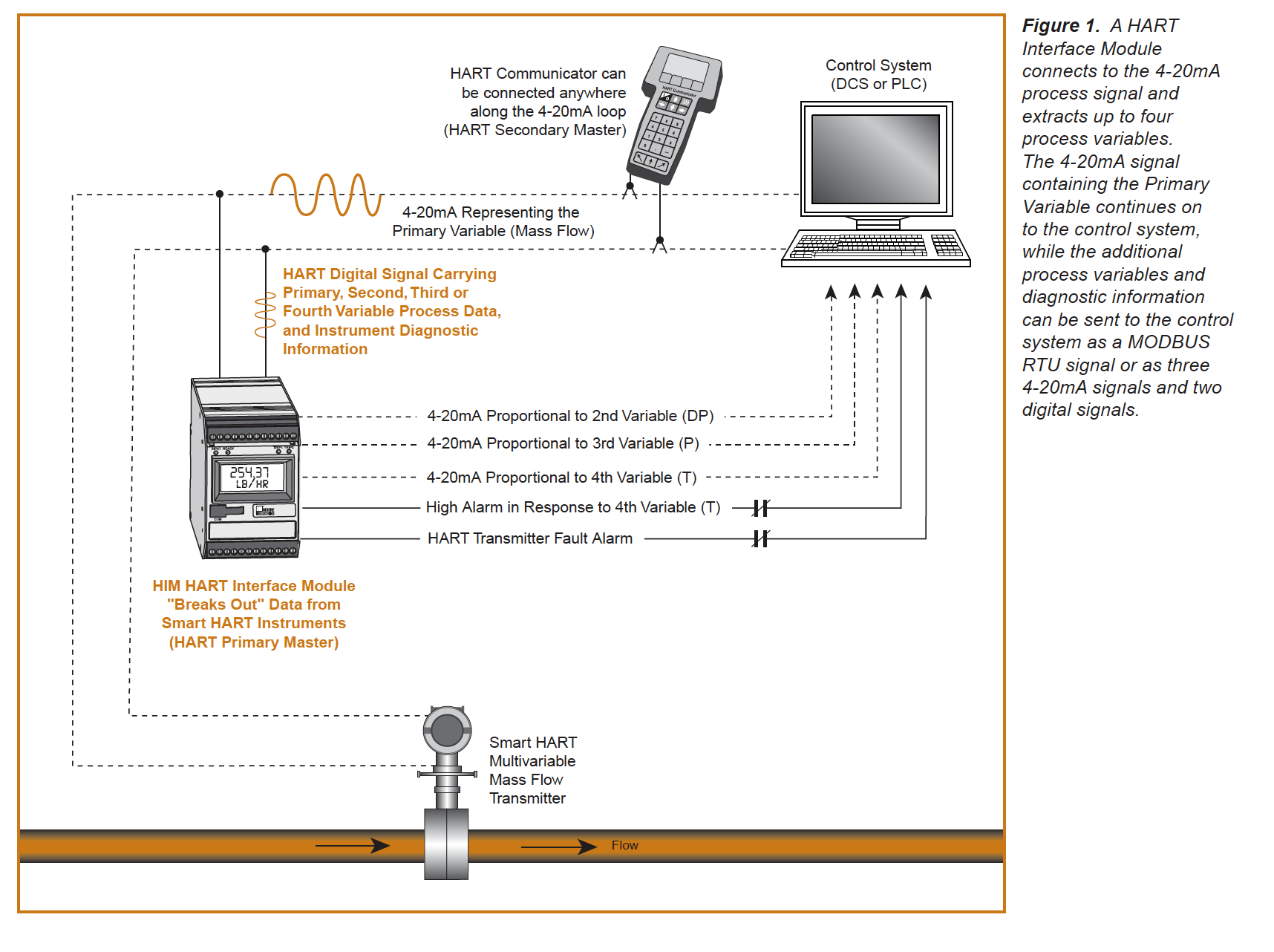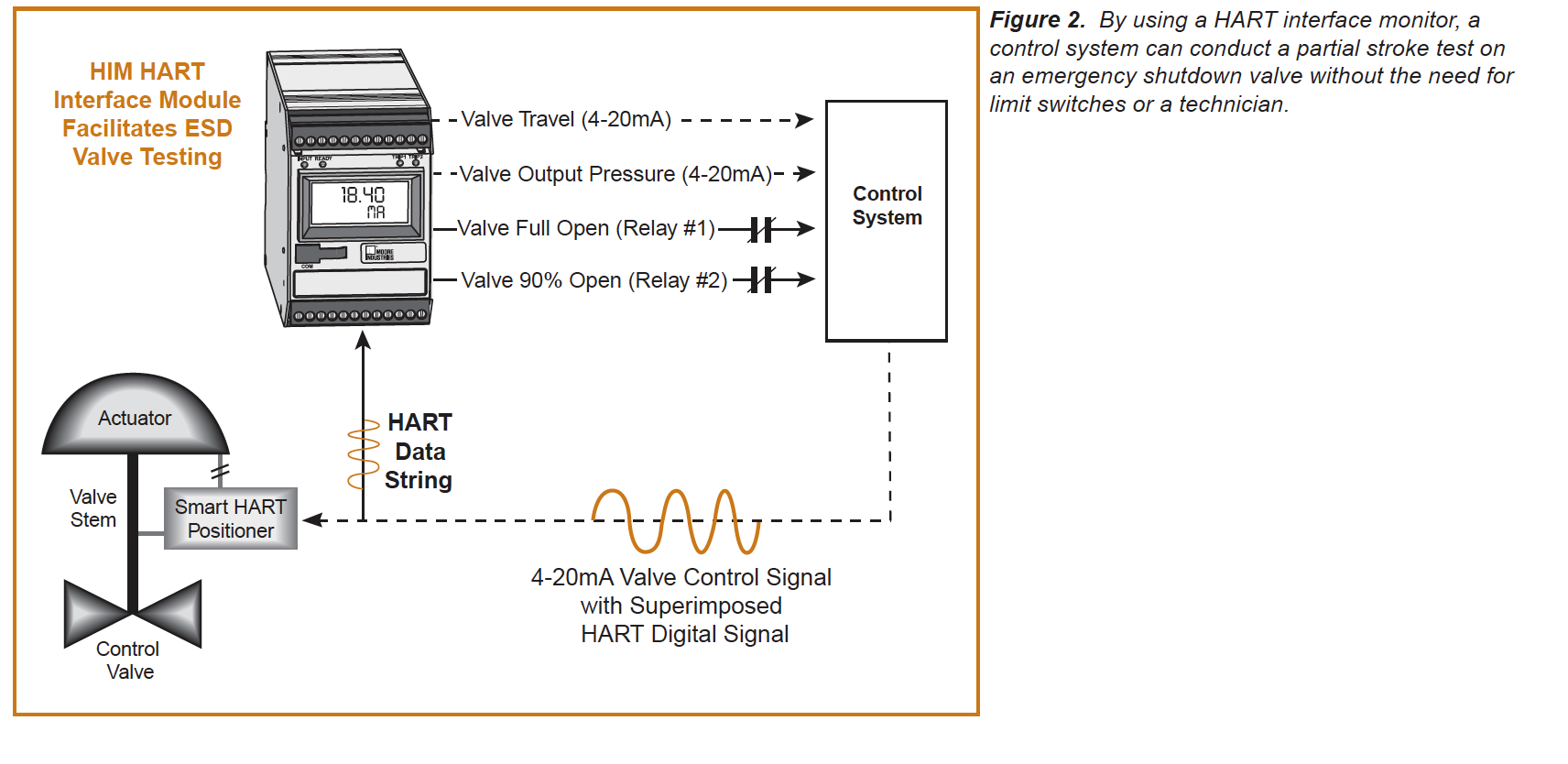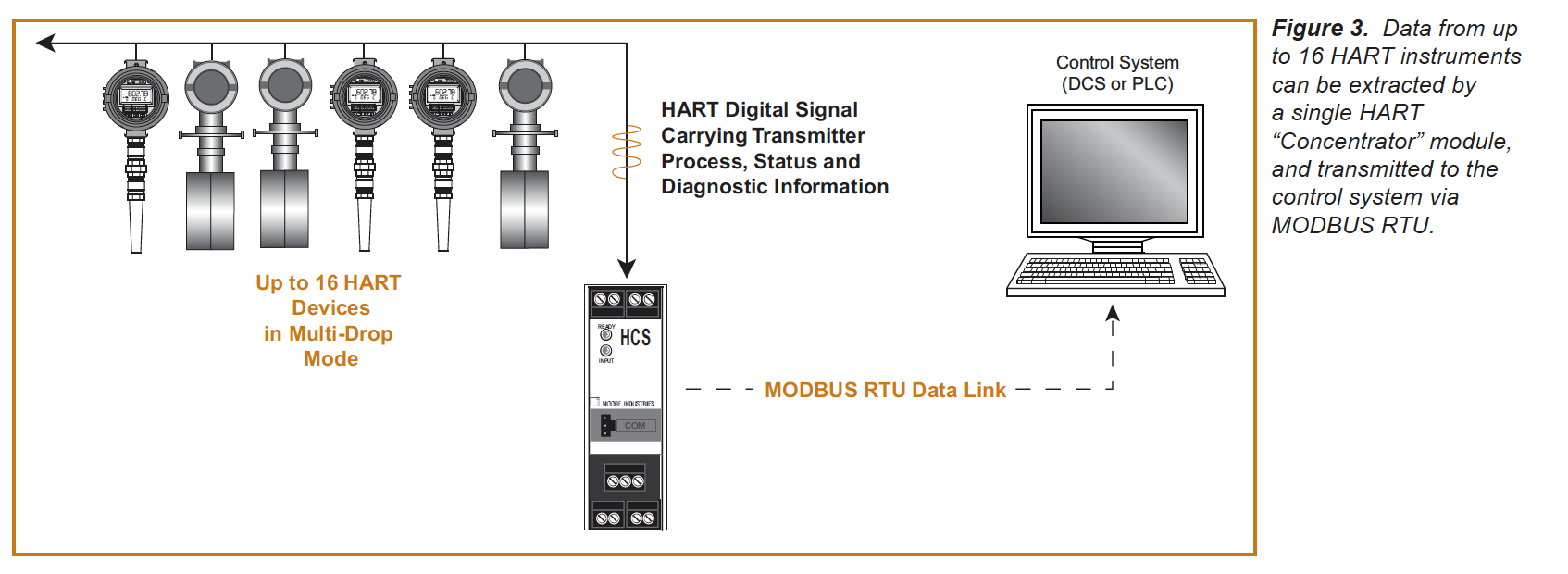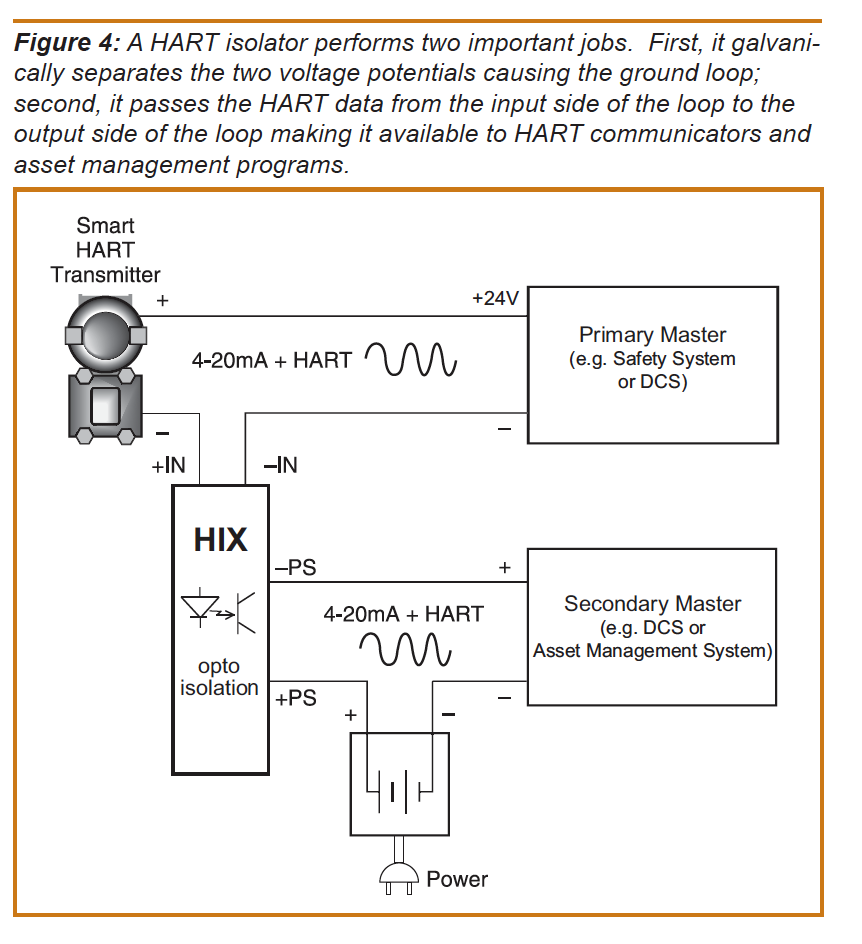According to the HART® Communications Foundation, there are more than 30 million HART-enabled instruments installed in chemical and process plants worldwide, and nearly most process transmitters made today are HART compatible.
HART-enabled transmitters, valve positioners, flowmeters, and other “smart devices” superimpose a digital signal upon their 4-20mA process signal. The HART digital signal often contains additional process measurements and other variables that may include instrument status, diagnostic data, alarms, calibration values and alert messages.
Many HART field transmitters are hard at work measuring process parameters, and producing a 4-20mA signal that is being used for process control by a DCS, PLC or some other control system. In many cases, HART instruments were installed simply because they could be configured and diagnosed easily with a HART handheld communicator (HHC). For a variety of reasons, the rest of the HART data often goes unused. One reason is because of the prohibitive cost of installing a plant wide HART monitoring system and lack of familiarity with alternatives.
A simple and cost effective solution for gathering HART information is to use a HART interface device. These HART interface devices make acquiring HART data a fairly simple proposition. This HART data is then made available to the control system via analog signals, discrete outputs or serial communications.
Extracting HART Data
A HART Interface Module can be installed across any termination point on a 4-20mA process loop. The installation does not interfere with the 4-20mA signal to the control system, nor does it interfere with a HART handheld HART Communicator or a plant wide HART monitoring system if present. It can be used with any HART enabled field device.
In the case of a mass fl ow transmitter (Figure 1), the 4-20mA signal carries the Primary Variable (fl ow) while the HART digital signal carries up to three additional process variables—often temperature, pressure, differential pressure, density, or raw flow—plus discrete data, such as alarms, status, etc. Some HART instruments can generate a dozen or more variables, all carried by the digital HART signal.
The HART interface module is configured by the user to extract the variables of interest. In Figure 1, it is configured to extract three process variables, a High Alarm and a Fault Alarm. Essentially, the HART interface monitor “strips out” the variables of interest from the HART digital signal, converts them to 4-20mA and discrete signals, and sends that data to the process control system or other receiving devices, such as a chart recorder or PLC.
Outputs from a HART interface module can be directly wired into the I/O rack of the control system as analog and digital signals, or they can be sent as a MODBUS RTU signal. The interface module can also be connected to a wireless device, for transmission via RF.

Advanced HART Applications
The use of HART interface modules on the market today allow engineers to assemble some interesting and useful HART applications.
HART Alarms—HART-enabled instruments almost always have built-in diagnostics, and the diagnostic information is contained in the HART digital signal. A HART Alarm module can be installed across the 4-20mA signal to monitor diagnostic data and sound an alarm when process conditions warrant it. A typical HART alarm module continually reads the HART diagnostic data, examines the Field Device Status Byte, and sends a fault alarm to an annunciator or control system if it detects alarms such as Field Device Malfunction, Analog Output Saturated, Variable Out of Limits, etc.
Valve Monitoring—A HART interface module can be connected to a HART valve positioner to monitor valve performance. Some HART alarm modules have multiple relay outputs, which can be tied to specific valve diagnostic and position data. For example, the monitor can provide relay outputs to indicate open or closed valve position, low actuator pressure, positioner temperature, or any other values that indicate valve problems. Installing a HART monitor is a simple and effective way to get position feedback from a smart positioner without the expense of running additional signal wires to the positioner in the fi eld.
Emergency Shutdown (ESD) Valve Testing—Using the capabilities of HART and an appropriate HART Monitor, partial stroke testing of emergency shutdown valves can be performed without the need for a technician standing by or the need to install limit switches. Instead, use a HART monitor (Figure 2) to extract stem position from the HART data and send it to a PLC or DCS. The controller then commands the valve to close, monitors data from the HART monitor to determine that the valve is closing, and then opens it again, thus verifying that the valve works.

Monitoring Multi-dropped Instruments—HART instruments can be installed individually—where a single HART transmitter connects via a twisted wire pair to a control system—or in a multidrop HART network, where up to 16 HART instruments communicate digitally over a single twisted pair. For a multidrop system, a HART Concentrator System (HCS) can extract HART digital data from any or all of the 16 field instruments (Figure 3), and transmit the data to a control system via a MODBUS RTU connection. This allows the control system to treat the 16 instruments almost like a fieldbus system; that is, it can obtain primary process variables from the instruments on one wire pair, and status, diagnostic and additional process variable data from the instruments on a fieldbus-like “segment.”
Protecting Process Signals—4-20mA HART signals are subject to problems from voltage surges, spikes, transients, and grounding problems. Although 90% of HART instruments are isolated, problems still occur. In the 10% that are not isolated, a simple ground loop can cause problems. A HART isolator galvanically separates the two voltage potentials causing the ground loop.

Isolating and Sharing HART Signals—In some cases, it is desirable to share both the analog output and HART data from a transmitter with two different hosts. For example, a refinery may want to isolate and share the analog signal and HART data from a transmitter with a DCS and an Emergency Shutdown System (ESD). While standard off the shelf analog isolators are designed to block noise, including HART signals, an isolator designed to pass HART (Figure 4) makes this possible. A HART isolator passes the HART data from the input side of the loop to the output side of the loop, making it available to HART handheld communicators and asset management programs.
HART monitors provide an economical and effective way to take advantage of data that is already installed throughout your plant. Often this additional HART data can be obtained without having to run new wires or installing new transmitters. For gathering HART data wirelessly, see the white paper entitled On Target: The BULLET WirelessHART® Adapter Provides Immediate Benefits.

